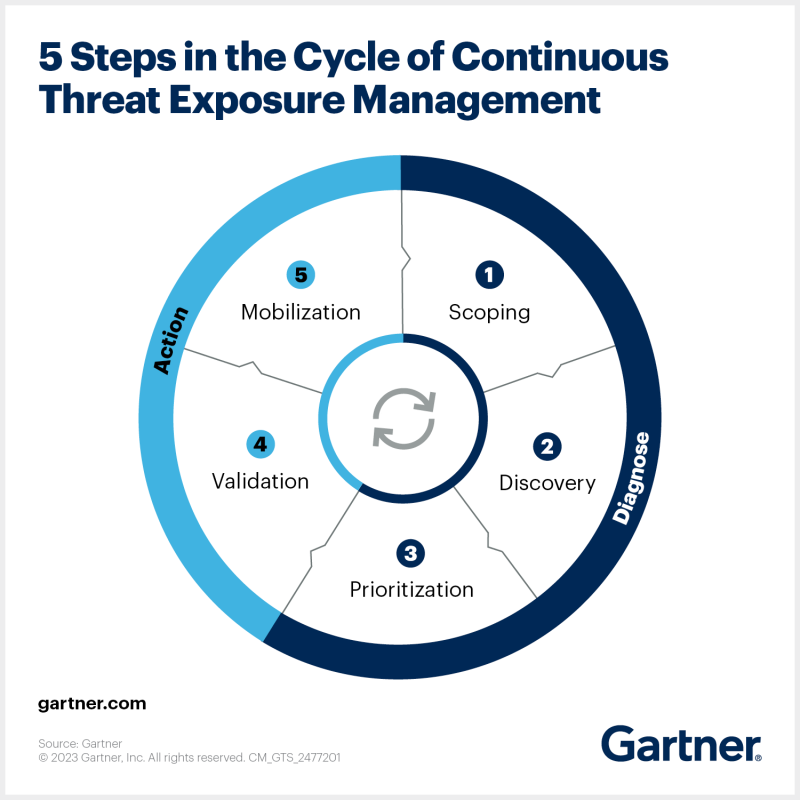Technology trends for business – table of contents:
This is no revelation: in the coming year of 2024, technology will again play a key role in shaping business. But while advances in AI are the most visible and ubiquitous, they are just one of the technology trends that will affect the way companies operate in 2024. So let’s consider what other technologies deserve the attention of entrepreneurs. What technology trends are likely to shape the near future of business?
Advanced automation and AI as a technology trends
Artificial intelligence is already assisting businesses in many areas. Systems based on machine learning can carry out conversations with customers, make accurate recommendations in online stores analyze data and predict future events. New solutions like Midjourney and DALL-E 3 can also generate images based on natural language descriptions.
AI will become even more sophisticated in 2024. According to the “Technology Trends Outlook 2023” report by analysts at McKinsey, generative artificial intelligence has already contributed $4.4 trillion in economic value. This is all thanks to a combination of visible and impactful applications and more inconspicuous ones, such as helping to create draft versions of emails, which greatly increase productivity in companies. Already, 25% of surveyed executives attribute more than 5% of their companies’ operating profit to the use of AI. In 2024, these metrics are expected to rise.

Source: DALL-E 3, prompt: Marta M. Kania (https://www.linkedin.com/in/martamatyldakania/)
AI is thus no longer limited to theory; it is becoming a real business driver. According to the McKinsey Global Survey, AI adoption is growing rapidly globally, with 40% of companies set to increase spending on AI-based solutions due to the growth of generative AI. They are using it to automate a variety of tasks, from customer data analysis to supply chain management. A great example of the business application of AI is Amazon, which uses robots in warehouse management. The machines intelligently sort and move goods in ways optimized by AI algorithms. Banks, meanwhile, are using AI to predict market trends.
Companies in 2024 that want to follow technology trends should identify areas where AI can bring specific business benefits and develop a strategy for its implementation. At the same time, they must keep in mind ethical issues and build trust in the technology. Only the responsible handling of AI will bring lasting benefits.>
Big Data analytics
Big data analytics technologies allow companies to extract valuable information from large data sets. Companies use them to make data-driven decisions, identify trends and create new products and services. They collect and process data from:
- the Internet of Things (IoT) – that is, devices and vehicles equipped with the latest technology, which is itself one of the more interesting technological trends,
- Social media – which we use on smartphones, computers and smart devices, and
- other, distributed data sources, such as websites, apps or opinion portals.
The increasing availability of data will give companies in 2024 enormous opportunities, but will also pose new challenges in processing, interpreting and protecting it. In other words, investment in the informed implementation of data science will be key.

Source: DALL-E 3, prompt: Marta M. Kania (https://www.linkedin.com/in/martamatyldakania/)
Either way, the growing ability to store and process huge data sets is opening up new analytical perspectives. Big data combined with artificial intelligence makes it possible to generate accurate forecasts and recommendations for business while cloud technologies (cloud storage and computing) empower even smaller companies to keep up with technological trends and afford to effectively collect and analyze customer data from various sources. It’s certain that in 2024 companies will need to expand their competence in data analysis to compete effectively.
Development of cybersecurity in technology trends
In the digital age, companies need to protect their data and systems from increasingly sophisticated cyberattacks. That’s why IT security will continue to be a priority technology trend in 2024. It’s not just about security software, but also about implementing thoughtful processes, employee training and risk management.
Gartner’s “Top Strategic Technology Trends 2024” report presents the concept of Continuous Thread Exposure Management (CTEM), which combines diagonalizing, detecting and predicting cyber threats, as well as penetration testing, where security testers take on the role of attackers and try to break through security. It enables continuous security improvement by prioritizing the protection of a company’s critical data and looking at security from a potential attacker’s point of view.

Source: Gartner (https://www.gartner.com/en/information-technology/insights/top-technology-trends)
According to McKinsey’s research, only 10% of companies have advanced cybersecurity mechanisms such as AI and machine learning used to detect and prevent cyber threats. The rest have big gaps to make up. For companies, therefore, a zero-trust architecture (ZTA) approach will be key, i.e., the assumption that a company’s digital security is inherently at risk, so it requires making informed decisions about to whom and how a company’s digital assets are shared.
Implementing the Internet of Things (IoT)
The Internet of Things, a network of connected devices that communicate without human intervention, is finding increasing use in business. Sensors and smart machines allow the collection of data, automation of processes and increased productivity. Companies are implementing them in, among other things:
- factories,
- magazines,
- agriculture and
- transports
However, as the McKinsey report “Technology Trends Outlook 2023” points out, this trend is part of a broader landscape of advanced connectivity solutions. This means that the development and deployment of the Internet of Things in business is closely linked to the adoption of solutions that enable high-speed connectivity. Since rapid transmission of large amounts of data is necessary for the smooth operation of IoT, development is essential:
- 5G/6G for mobile connections,
- Wi-Fi 6 and 7, also known as industrial Wi-Fi,
- satellite connections, and
- fiber optic connections.
The rise of quantum computing
In 2022, IBM unveiled the Osprey quantum computer with 433 qubits – the largest such machine in the world. Google, meanwhile, demonstrated in 2023 a new technique for connecting cubits that can significantly reduce computational errors. The technique uses so-called “optics on a chip” to combine cubits more precisely. Google’s new computer is 241 million times faster than the machine unveiled in 2019. These advances show that in 2024 the path to commercial applications of quantum computers will be significantly shortened. And quantum computing is becoming one of the important technology trends of the coming year.
Quantum computing, while still in development, promises a breakthrough in solving complex problems. This means not only the ability to create weather models to respond to the challenges of climate change but also to solve the most complex business problems in industries:
- pharmaceutical – such as developing new drugs or conducting genetic research,
- chemical – creating new materials with the required properties,
- finance – related to the movements of global stock markets, or
- automotive.
For example, Quantum Computing Inc (QCi) met a complex design challenge from an automotive OEM company in a record six minutes! The challenge was to optimize the vehicle’s 3854 sensors to detect obstacles in a variety of driving scenarios at a minimal cost of operation.

Source: DALL-E 3, prompt: Marta M. Kania (https://www.linkedin.com/in/martamatyldakania/)
Quantum computers can perform some calculations up to millions of times faster than classical computers. Although their widespread application is still a distant future, companies such as Daimler are already testing the ability to simulate the behavior of complex systems, for example, to design Mercedes car batteries, on prototypes of quantum computers.
Sustainability and green technologies in technology trends
Companies are increasingly focusing on sustainability, using technologies that help reduce carbon emissions in the atmosphere. For example, Zipline, a next-generation logistics platform powered by a fleet of autonomous electric drones, estimates it can make deliveries seven times faster than traditional vehicles while emitting 97% fewer emissions.

Source: Zipline (www.flyzipline.com)
In the face of climate change and growing environmental awareness, companies must bet on sustainable business and green technologies. The main technology trends in this area for the coming years are:
- renewable energy sources,
- electromobility,
- closed loop economy.
The International Labor Organization (ILO) predicts that the “green transition” could generate 24 million new jobs by 2030. Implementing solutions to reduce CO2 emissions will therefore not only be a matter of responsibility but also a business opportunity.
Metaverse
The metaverse, a combination of virtual and augmented reality with physical reality, is opening up new opportunities for online interaction and collaboration. According to McKinsey, the value of the metaverse market could reach as much as $5 trillion in 2030. More and more companies are testing metaverse applications, particularly for:
- training – both in acquiring soft skills and, for example, operating machinery in a hazardous environment,
- conduct remote meetings – including those that require collaboration on improving the product present in the form of a digital twin,
- in marketing – as a new and very promising channel of communication with customers and clients.

Source: Nike (www.nike.com)
For example, the Nike brand has created the Nikeland world in the metaverse, where virtual products can be purchased. Other companies are adopting the metaverse to simulate business or manufacturing processes. In 2024, the metaverse will become more mature, and the first pilot projects should yield tangible results.
Technology trends 2024 – summary
In the year 2024, we will definitely witness the next stage in the evolution of technological trends that will impact various business sectors. From AI to sustainability, these changes will shape the future and offer new opportunities for entrepreneurs.
Still, achieving success will not depend solely on having the latest technological tools, but on the ability to apply them strategically. Companies that can adapt and integrate these innovations into their business models will be leaders in their industries. It is worth noting that artificial intelligence makes technology no longer just a tool to achieve business goals, but becomes a partner in their creation.

If you like our content, join our busy bees community on Facebook, Twitter, LinkedIn, Instagram, YouTube, Pinterest, TikTok.
Author: Robert Whitney
JavaScript expert and instructor who coaches IT departments. His main goal is to up-level team productivity by teaching others how to effectively cooperate while coding.
AI in business:
- Threats and opportunities of AI in business (part 1)
- Threats and opportunities of AI in business (part 2)
- AI applications in business - overview
- AI-assisted text chatbots
- Business NLP today and tomorrow
- The role of AI in business decision-making
- Scheduling social media posts. How can AI help?
- Automated social media posts
- New services and products operating with AI
- What are the weaknesses of my business idea? A brainstorming session with ChatGPT
- Using ChatGPT in business
- Synthetic actors. Top 3 AI video generators
- 3 useful AI graphic design tools. Generative AI in business
- 3 awesome AI writers you must try out today
- Exploring the power of AI in music creation
- Navigating new business opportunities with ChatGPT-4
- AI tools for the manager
- 6 awesome ChatGTP plugins that will make your life easier
- 3 grafików AI. Generatywna sztuczna inteligencja dla biznesu
- What is the future of AI according to McKinsey Global Institute?
- Artificial intelligence in business - Introduction
- What is NLP, or natural language processing in business
- Automatic document processing
- Google Translate vs DeepL. 5 applications of machine translation for business
- The operation and business applications of voicebots
- Virtual assistant technology, or how to talk to AI?
- What is Business Intelligence?
- Will artificial intelligence replace business analysts?
- How can artificial intelligence help with BPM?
- AI and social media – what do they say about us?
- Artificial intelligence in content management
- Creative AI of today and tomorrow
- Multimodal AI and its applications in business
- New interactions. How is AI changing the way we operate devices?
- RPA and APIs in a digital company
- The future job market and upcoming professions
- AI in EdTech. 3 examples of companies that used the potential of artificial intelligence
- Artificial intelligence and the environment. 3 AI solutions to help you build a sustainable business
- AI content detectors. Are they worth it?
- ChatGPT vs Bard vs Bing. Which AI chatbot is leading the race?
- Is chatbot AI a competitor to Google search?
- Effective ChatGPT Prompts for HR and Recruitment
- Prompt engineering. What does a prompt engineer do?
- AI Mockup generator. Top 4 tools
- AI and what else? Top technology trends for business in 2024
- AI and business ethics. Why you should invest in ethical solutions
- Meta AI. What should you know about Facebook and Instagram's AI-supported features?
- AI regulation. What do you need to know as an entrepreneur?
- 5 new uses of AI in business
- AI products and projects - how are they different from others?
- AI-assisted process automation. Where to start?
- How do you match an AI solution to a business problem?
- AI as an expert on your team
- AI team vs. division of roles
- How to choose a career field in AI?
- Is it always worth it to add artificial intelligence to the product development process?
- AI in HR: How recruitment automation affects HR and team development
- 6 most interesting AI tools in 2023
- 6 biggest business mishaps caused by AI
- What is the company's AI maturity analysis?
- AI for B2B personalization
- ChatGPT use cases. 18 examples of how to improve your business with ChatGPT in 2024
- Microlearning. A quick way to get new skills
- The most interesting AI implementations in companies in 2024
- What do artificial intelligence specialists do?
- What challenges does the AI project bring?
- Top 8 AI tools for business in 2024
- AI in CRM. What does AI change in CRM tools?
- The UE AI Act. How does Europe regulate the use of artificial intelligence
- Sora. How will realistic videos from OpenAI change business?
- Top 7 AI website builders
- No-code tools and AI innovations
- How much does using AI increase the productivity of your team?
- How to use ChatGTP for market research?
- How to broaden the reach of your AI marketing campaign?
- "We are all developers". How can citizen developers help your company?
- AI in transportation and logistics
- What business pain points can AI fix?
- Artificial intelligence in the media
- AI in banking and finance. Stripe, Monzo, and Grab
- AI in the travel industry
- How AI is fostering the birth of new technologies
- The revolution of AI in social media
- AI in e-commerce. Overview of global leaders
- Top 4 AI image creation tools
- Top 5 AI tools for data analysis
- AI strategy in your company - how to build it?
- Best AI courses – 6 awesome recommendations
- Optimizing social media listening with AI tools
- IoT + AI, or how to reduce energy costs in a company
- AI in logistics. 5 best tools
- GPT Store – an overview of the most interesting GPTs for business
- LLM, GPT, RAG... What do AI acronyms mean?
- AI robots – the future or present of business?
- What is the cost of implementing AI in a company?
- How can AI help in a freelancer’s career?
- Automating work and increasing productivity. A guide to AI for freelancers
- AI for startups – best tools
- Building a website with AI
- OpenAI, Midjourney, Anthropic, Hugging Face. Who is who in the world of AI?
- Eleven Labs and what else? The most promising AI startups
- Synthetic data and its importance for the development of your business
- Top AI search engines. Where to look for AI tools?
- Video AI. The latest AI video generators
- AI for managers. How AI can make your job easier
- What’s new in Google Gemini? Everything you need to know
- AI in Poland. Companies, meetings, and conferences
- AI calendar. How to optimize your time in a company?
- AI and the future of work. How to prepare your business for change?
- AI voice cloning for business. How to create personalized voice messages with AI?
- Fact-checking and AI hallucinations
- AI in recruitment – developing recruitment materials step-by-step
- Midjourney v6. Innovations in AI image generation
- AI in SMEs. How can SMEs compete with giants using AI?
- How is AI changing influencer marketing?
- Is AI really a threat to developers? Devin and Microsoft AutoDev
- AI chatbots for e-commerce. Case studies
- Best AI chatbots for ecommerce. Platforms
- How to stay on top of what's going on in the AI world?
- Taming AI. How to take the first steps to apply AI in your business?
- Perplexity, Bing Copilot, or You.com? Comparing AI search engines
- ReALM. A groundbreaking language model from Apple?
- AI experts in Poland
- Google Genie — a generative AI model that creates fully interactive worlds from images
- Automation or augmentation? Two approaches to AI in a company
- LLMOps, or how to effectively manage language models in an organization
- AI video generation. New horizons in video content production for businesses
- Best AI transcription tools. How to transform long recordings into concise summaries?
- Sentiment analysis with AI. How does it help drive change in business?
- The role of AI in content moderation


















